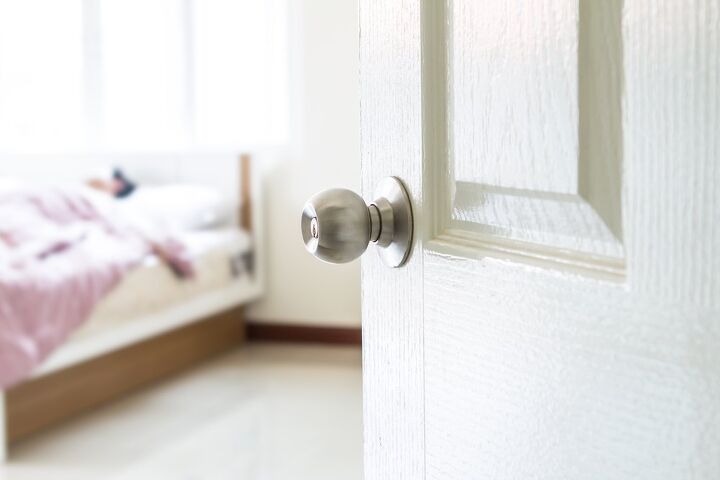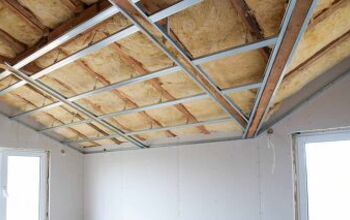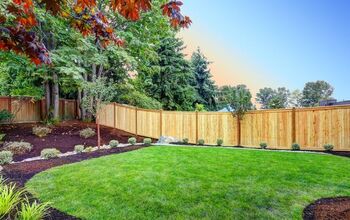How To Soundproof A Hollow Door (Here's What You Can Do)

We have all been working from home and have found challenges in balancing work and home life. A big challenge we face is noise control. Whether we are recording video or having online classes, noise from other parts of the house can be distracting and completely ruin our recordings.
One reason for this noise problem is that most internal doors in houses are hollow. They are lightweight frames with thin wood coverings on the outside. These doors do not have enough mass to stop sounds coming from other parts of the house.
To soundproof your hollow interior doors, the easiest method is to hang a soundproofing blanket in front of the door. Other soundproofing materials to add around the door include weather stripping, a door sweep, and soundproof sealant. If you need to drastically reduce noise, you can also add soundproofing elements to the door itself, such as mass-loaded vinyl and acoustic foam.
Some of these solutions require more DIY skills than others. Details on how to apply these techniques follow, so read on to find which solution will be the right one for you.
Do You Need to Install or Replace a Door?
Get free, zero-commitment quotes from pro contractors near you.

Considerations Before Soundproofing Your Hollow Door
First, you need to think about the purpose of the room you are soundproofing and how much soundproofing you need. Also, some of these suggestions are not the most attractive solutions, so you need to consider whether the ambiance is important.
If you are renting, you will need to consider the permanent effect on the door. Finally, some of these treatments are heavy, so you must consider whether the hinges and frame can support the additional weight that the soundproofing adds to the door.
Non-DIY Ways to Soundproof a Hollow Door
Some of us are not comfortable with advanced do-it-yourself work. But, you still need some soundproofing for your home office. No problem. Try these more accessible tips for soundproofing your hollow door.
1. Rugs
One thing to consider is that you need to address the sound coming in under the door. An easy way to interrupt some of the sound waves is to put down rugs on either side of the door. This will help dampen the sound.
2. Sealant & Glue
If there are gaps around your doorframe, you can fill them in with a noise-proofing sealant. Green Glue is a unique compound designed for soundproofing applications. For example, you can use it for sealing cracks and attaching acoustic foam or sound deadening mats to your surfaces.
3. Door Sweep
The gap under the door is a crucial area for sound to penetrate. A door sweep or draft blocker is a simple way to block a little bit of sound. These come in a couple of different styles. One style attaches to the door and has a soft rubber blade that touches the floor. It effectively blocks drafts and sounds under the door.
Another style of door sweep has two large round sponges encased in fabric and connected by a strip of cloth. The strip goes under the door, and each roll goes on either side. They fit tightly enough to stay in place as the door opens and closes. Many of these have washable covers as they will inevitably become dirty as the door opens and closes.
4. Weather Stripping
A similar technique to the door sweep is to add weather stripping around the door. This is generally easy to install according to the manufacturer’s instructions. There are many different sizes of weatherstripping available. You can measure the gaps in your door frame to find the best size. There are also different materials to choose from. Foam, rubber, and silicone are popular options.
5. Soundproof Blanket or Curtains
A soundproof blanket can be hung on one or both sides of the door for double soundproofing. Many of these blankets come with grommets, so you can hang them on hooks above the door or on a curtain rod so you can slide them back when you don’t need them. These blankets are heavy. You should be sure to hang the hooks into studs due to the weight of the blankets.
Soundproofing curtains are also an option, although they may not block as much sound as the blanket. However, they are easy to install and remove as needed. Simply install a curtain rod above your door and hang them like curtains. They already have grommets in them for easy hanging. You should be able to find curtains in colors that go with your room if appearance is of concern to you.
DIY Ways to Soundproof a Hollow Door
Some people are ready to get down and dirty with DIY. If you are comfortable doing it yourself, or if you are willing to give something new a try, check out these suggestions for soundproofing your hollow door.
Many of the following options add considerable weight to the door. Since you are working with a hollow door, you need to consider the fact that the hinges may not support the extra weight. Therefore, when you take the door off to add the soundproofing, change out the hinges to heavy-duty ones that will support the additional weight of soundproofing materials.
6. Expanding Spray Foam Insulation
If you don’t want to attach anything to the door, you can fill the hollow spaces in the door with expanding foam. You will need a drill with a small bit, maybe a quarter of an inch, 4-5 cans of spray foam, and some tape.
Take the door off its hinges and lay it down where you can work on it. Drill holes up the sides of the door about every 12 inches. Start at the bottom and spray foam into the door. Cover the holes with tape as you go, so it doesn’t ooze out as it expands.
Let the foam expand and dry completely. If any expands out of the holes you made, you can shave it off with a sharp knife or a razor blade. The foam is also paintable, so you can paint over the holes before you rehang the door.
7. Sound Deadening Mats
These sound deadening mats are designed for automotive use. These self-adhesive mats reduce road noise in the car. Therefore, they are most likely going to reduce lower sounds in your room. They can be cut with a box knife and installed with a hard roller.
If you don’t want to stick these directly to the door, you can cut a panel of thin plywood or Masonite the size of the door. Then you can adhere the sound deadening mats to the board. Finally, screw the panel onto the door. Then, when you want to remove it, you will only have to fill a couple of holes instead of trying to remove a door full of adhesive.
8. Mass Loaded Vinyl
Mass Loaded Vinyl is an excellent sound barrier. Sound waves just dissipate against it. It weighs half a pound per square foot, so it will add at least 10 pounds to your door. It comes on a roll, and you can staple it onto the door. If you add it to both sides, you will have excellent sound dampening. You can also use this vinyl inside walls and ceilings to increase the amount of sound dampening you need.
9. Acoustic Foam
Acoustic Foam panels are a good choice for sound reduction. You can attach these directly to a door or a panel, then to the door, depending on your needs. Acoustic panels are also helpful for hanging throughout the studio to reduce sound bouncing around the room. One advantage to these panels is that they come in a variety of color options.
The basic black acoustic panels are affordable and lightweight and can be hung with command strips. You can order these acoustical tiles in multiple colors, shapes, and thicknesses. You should be able to find something that works with your decor if you are concerned with aesthetics.
Do You Need to Install or Replace a Door?
Get free, zero-commitment quotes from pro contractors near you.

Conclusion
Depending on your soundproofing needs and your level of DIY comfort, you can create a doorway that blocks most of the sound that comes through the rest of your home. Whether it is the family TV in the living room or your roommate’s ridiculously loud music, you can block it out and attend your meeting, class, or make your recordings.
Some simple weather stripping or a draft blocker under the door is an easy fix for basic sounds. In addition, you can hang sound-blocking blankets or curtains for more sound insulation that is not permanent, which are great choices for a rental property.
Try combining these options for greater soundproofing. Finally, if you need more silence and have a knack for DIY projects, try some mass-loaded vinyl and acoustical tile to round out your home studio.

We are a team of passionate homeowners, home improvement pros, and DIY enthusiasts who enjoy sharing home improvement, housekeeping, decorating, and more with other homeowners! Whether you're looking for a step-by-step guide on fixing an appliance or the cost of installing a fence, we've here to help.
More by Upgraded Home Team



























